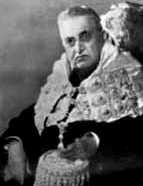

Among the discussions held in the public arena, echoed in newspapers and journals, two stand out. In response to the challenge posed by Gago Coutinho, who, at a session of the Academy of Sciences, refuted interpretations published in the “National Edition” of Os Lusíadas (1928), JMR countered with “The double route of Vasco da Gama in Os Lusíadas , V, 4-13, and the objections of Mr Almirante Gago Coutinho” (1929). Then, in successive replies over a period of five years, a tug-of-war ensued. Without changing his arguments, JMR grew impatient and, defending “For the fourth time, Vasco da Gama’s double route in Os Lusíadas ” (1932), he ironically remarked: “When I write my pamphlet For the fifteenth time, Vasco da Gama’s double route in Os Lusíadas, I will still be obliged to repeat to the Admiral what I am now saying for the third time” (p. 18). His calculation was excessive, but the dispute grew until “For the sixth time, Vasco da Gama’s double route in Os Lusíadas , V, 4-13” (1934).
According to JMR, a process of contamination can be detected in Os Lusíadas : when narrating the beginning of Gama’s journey, Camões sometimes suggests the route indicated in 16th-century historiography (Lisbon, east of the Canary Islands, Santiago), and sometimes an alternative based on what he had empirically witnessed (Lisbon, Madeira, Cape Verde). To the question “How does the Poet attribute to Vasco da Gama what happened to himself?” (“The double route of Vasco da Gama in Os Lusíadas, V, 4-13 [...]”, 1929, p. 15), JMR, supported by both chronicles and itineraries and by his analysis of the epic verses, replies: “What would not be permitted to a historian, Camões was able to do as a poet.” (p. 20). This Aristotelian distinction between the fields and codes of the poet and the historian, which was peremptory with regard to epic poetry, was erased by JMR when he turned his attention to lyric poetry, whose “reality” he firmly believed in. Based on this belief, shared, incidentally, by contemporaries such as Teófilo Braga and Wilhelm Storck, poetry was synonymous with “autobiographical document,” and “to have the key to Camões’ love life” was to have “the key to the exegesis of most of his rhymes” (“D. Carolina Michaëlis e os Estudos Camonianos”, 1927, p. 56). With this interpretation in mind, JMR constructed an obsessive “thesis”, which he proclaimed in “Camões e a Infanta D. Maria” (“The ardent passion of the mad poet for the beautiful, educated and serious daughter of the fortunate king constitutes, as one might assume a priori, the culminating point of his tormented life.” – 1910, p. 5); a “thesis” reiterated even when new elements, gleaned from old manuscripts, disturbed it. How to reconcile the Camões of high love with the Camões of letters that revealed him to be a “chronicler of beatings” and “historian of the deeds of creatures whom he himself calls ‘freshwater nymphs’ and ‘ladies for hire’”? (“Commentary on the unpublished letter”, 1925, p. 151). Fabricating falls and redemptions, crimes and punishments, JMR refuses to give up on the “Infanta thesis”, which pervades everything he writes, whether it be the text sent to the Portuguese Exhibition in Seville ( ) (1929), the chapter in Albino Forjaz Sampaio’s História da Literatura Portuguesa Ilustrada (1930), or short articles that promise, auspiciously, the unfolding of a novel: “Camões. The love crisis in Ceuta and its consequences” (1930), “Camões’ exile to the Moluccas” (1934) or “Camões: His declarations of love to the Infanta D. Maria and the consequences that ensued” (1938).
This work is financed by national funds through FCT - Foundation for Science and Technology, I.P, in the scope of the projects UIDB/04311/2020 and UIDP/04311/2020.
